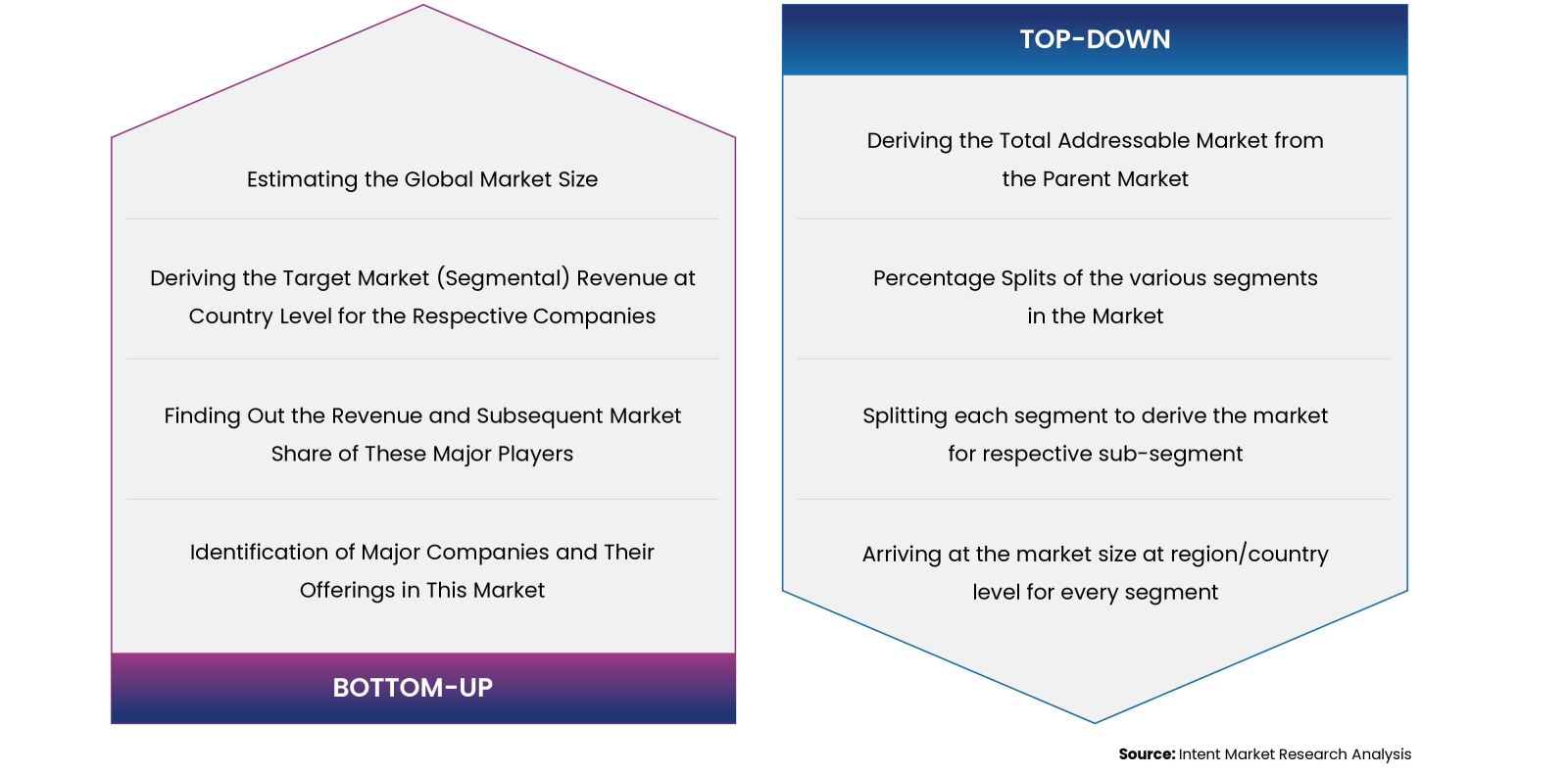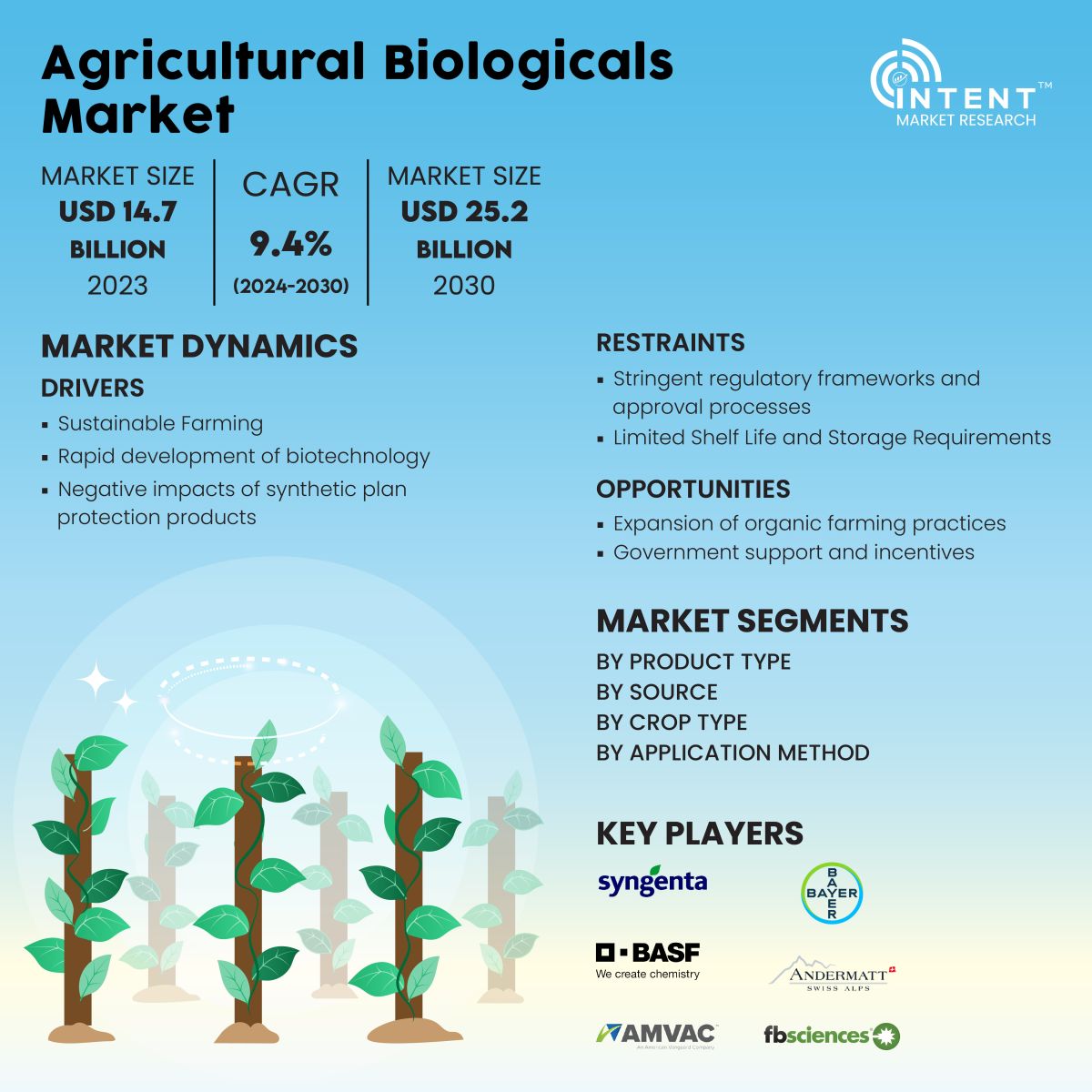According to Intent Market Research, the Agricultural Biologicals Market is expected to grow from USD 14.7 billion in 2023-e at a CAGR of 9.4% to touch USD 25.2 billion by 2030. Agricultural biologicals is a competitive market, the prominent players in the global market include AMVAC, Andermatt, BASF, Bayer, Certis, Corteva, Chr. Hansen, FBSciences, Koppert, Lallemand, MBI, Novozymes, Stoller, Syngenta, UPL, Vegalab, Valent, and Verdisian.
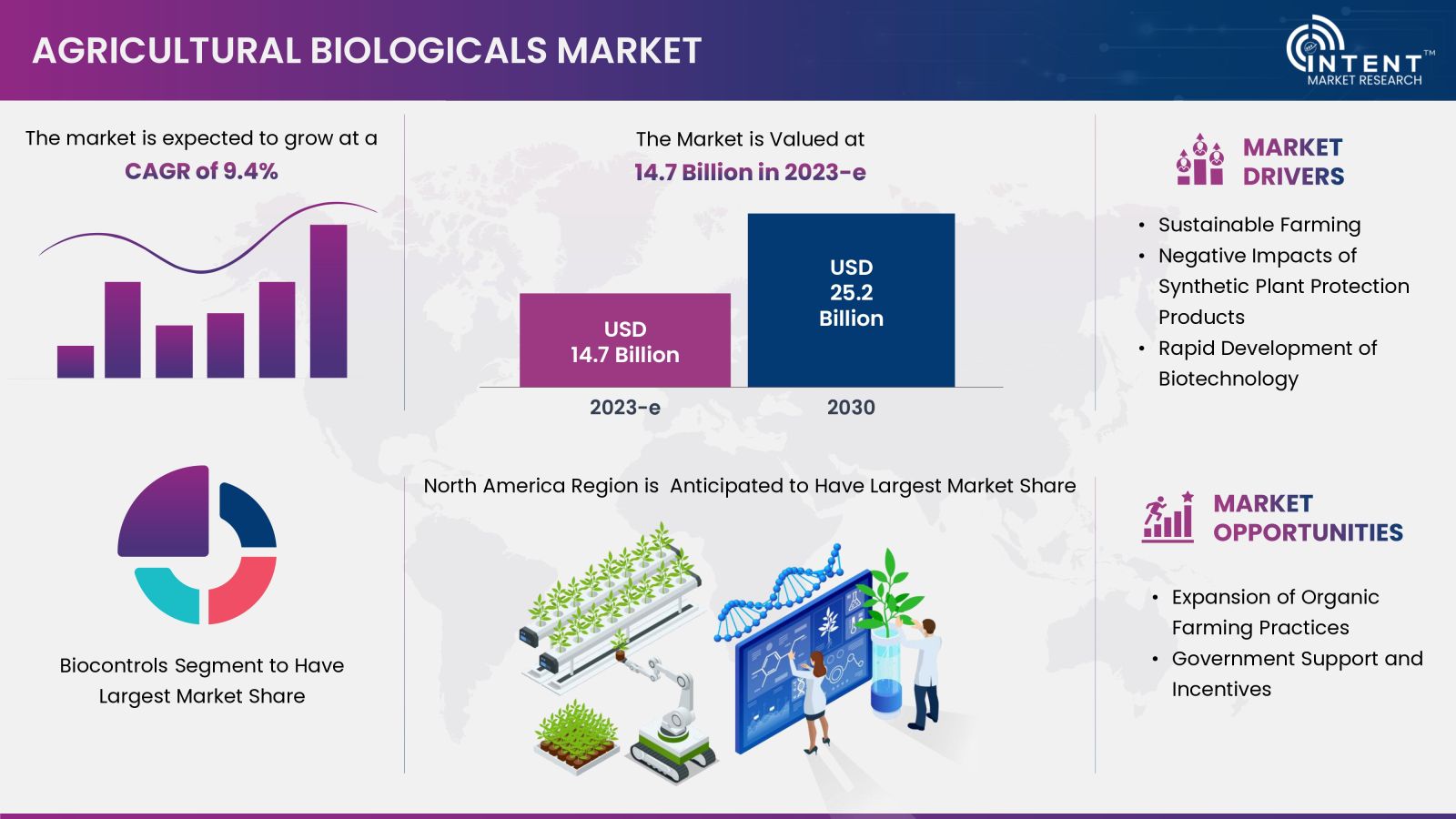
Click here to: Get FREE Sample Pages of this Report
The market is expected to grow in size over the forecast period due to rising demand for organic food and increased attention being paid to sustainable agriculture. Agricultural biologicals refer to a broad range of products that are used to improve soil fertility, biological activity, and plant growth. These products include biocontrols, biostimulants, and biofertilizers, which are made from naturally occurring microorganisms, plant extracts, beneficial insects, or other organic matter.
The development of innovative agricultural biological products that provide more effective and focused solutions for crop protection and yield improvement, along with other numerous biotechnology and microbiology advancements, has stimulated market growth. Moreover, agricultural biologicals have become more widely used as a sustainable way to boost crop productivity while reducing environmental damage.
Sustainable Farming is Driving the Market Growth
Agricultural biologicals have become a viable substitute for traditional chemical pesticides and fertilizers owing to their multiple benefits for sustainable farming, quicker timeframes for product development, increased biological efficiency, and flexible application techniques. Although the development of these products is still in its early stages, agricultural biologicals are anticipated to provide sustainable farming practices. In August, 2023 the Mosaic Company announced the formation of Mosaic Biosciences, its biologic crop solutions platform. With the platform's agricultural biologics, farmers will be able to optimize crop yield potential while fostering a healthy soil biology.
While agricultural biological have variable performance, it is important to note that these bio innovations are expected to develop into a potent tool for biological crop protection in a range of crop cultivations. In August 2021, the Japanese Ministry of Agriculture, Forestry, and Fisheries (MAFF) initiated the Green Food System Strategy, aiming to encourage the adoption of biostimulants and biopesticides. This strategic move by MAFF is poised to significantly impact the agriculture biologicals market by promoting the utilization of these environmentally friendly and sustainable solutions within the agricultural sector.
Key Findings of the Agricultural Biologicals Market Study
Biocontrols Segment Expected to Grow with Significant CAGR from 2024 to 2030
The biocontrols held a dominant position in the global agricultural biologicals market. This was largely due to the growing use of biocontrols in soil, foliage, and turfs, especially in North America and Europe. Insect sex pheromones and scented plants, which draw in and capture pests, are important biocontrol products. However, microbial pesticides have active ingredients that effectively control different kinds of pests. Among these, Bacillus thuringiensis strain-containing microbial pesticides are highly popular due to their capacity to create a protein mixture that drives out pests.
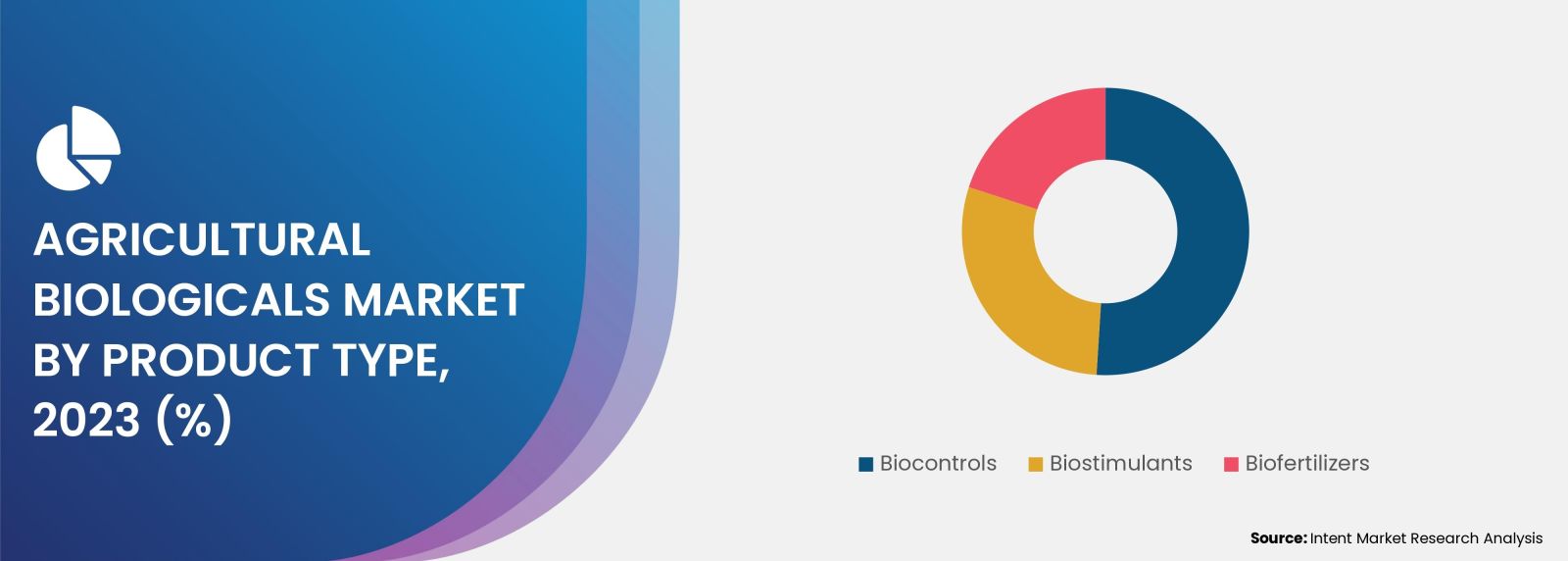
Microbials Expected to Register the Higher CAGR
Agricultural microbial products have become increasingly popular all over the world, but particularly among Western nations, especially in the US and Europe. This makes sense considering that over half of all biopesticides produced globally are used in America. The need for biocontrols in agriculture is expected to fuel market growth, even though it has a bright future in developing nations such as China and India.
Products classified as biologicals have active ingredients that are either naturally occurring microorganisms or microbial derivatives. These goods are being used more and more as biostimulants, biocontrols, and biofertilizers which offer a complete solution for maintaining plant health.
Cereals & Grains are Boosting the Demand for Agricultural Biologicals
In 2023, the cereals & grains crop type segment held the largest agricultural biologicals market. The increased demand for crops such as wheat, rice, corn, barley, and millet on a worldwide scale is the reason for the higher share. Agricultural biologicals are especially useful for cereals and grains as they provide efficient solutions for crop stimulation, nutrient enhancement, and pest control. These products are widely used as they work well with the growth cycles of grains and cereals.
Cereals and grains are emerging as key drivers propelling the growth of the agriculture biologicals market. As the agriculture industry places a growing emphasis on sustainable and environmentally conscious approaches, the adoption of agriculture biologicals in cereals and grains is set to play a pivotal role in shaping the future of modern agriculture.
Foliar Spray to Record High Growth
The foliar spray method dominated the market due to the high demand for biologicals in improving seed qualities to increase crop yield. Adoption of cutting-edge foliar spray technologies can ensure economical, environmentally friendly farming practices, maximize the impact of biological solutions, and reduce environmental impact.
Foliar spray application maximizes resource use, which is consistent with sustainable agriculture principles. Farmers can use fewer conventional soil-applied pesticides and fertilizers and can instead adopt more environmentally friendly practices. Foliar sprays aid in the development of more resilient crops by improving nutrient uptake and strengthening plants against pests and illnesses. Using foliar sprays to increase agricultural biologicals' efficacy is becoming increasingly important as the demand for sustainable agriculture grows which will have a significant impact on the direction of the industry.
North America Captured a Significant Market Share
North America gained a significant position in the global agricultural biologicals market and emerged as the leader. The majority of producers are centered in the US and the region's growth can be attributed to the significant presence of multinational producers of agricultural products. The area's agricultural practices have also continuously changed over time, embracing cutting-edge farming methods, technological developments, ongoing research and development, and government policies that support sustainable farming practices.
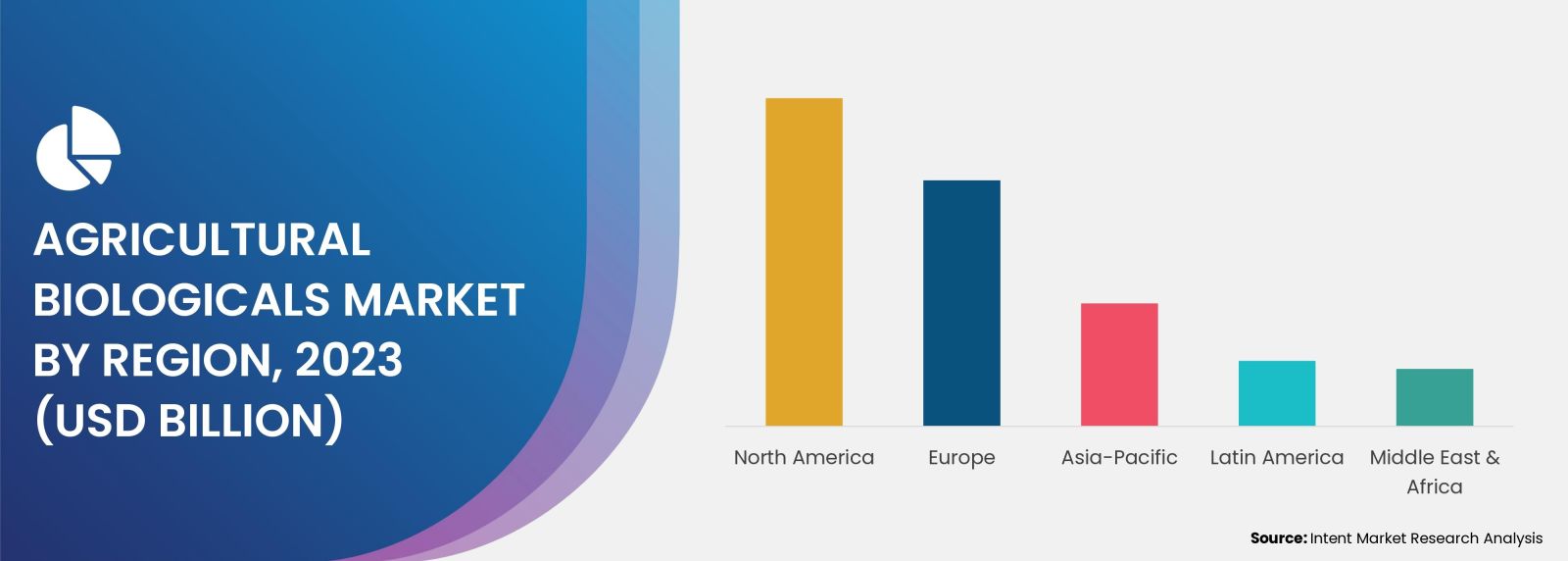
Key players operating in the global agricultural biologicals market are AMVAC, Andermatt, BASF, Bayer, Certis, Corteva, Chr. Hansen, FBSciences, Koppert, Lallemand, MBI, Novozymes, Stoller, Syngenta, UPL, Vegalab, Valent, and Verdisian. To tap the potential of this growing market, market players have started adopting several strategies to improve their market share. Interestingly, in May 2023, Novozymes and Azelis signed a distribution agreement for Novozymes' biologic crop solutions in Malaysia. During the forecast period, there is expected to be significant growth in the agricultural biologicals market due to the global demand for these types of agreements.
Click here to: Get your custom research report today
Agricultural Biologicals Market Coverage
The report provides key insights into the agricultural biologicals market, and it focuses on technological developments, trends, and initiatives taken by the government and private players. It delves into market drivers, restraints, opportunities, and challenges that are impacting market growth. It analyses key players as well as the competitive landscape within the global market.

Report Scope:
|
Report Features |
Description |
|
Market Size (2023-e) |
USD 14.7 billion |
|
Forecast Revenue (2030) |
USD 25.2 billion |
|
CAGR (2024-2030) |
9.4% |
|
Base Year for Estimation |
2023-e |
|
Historic Year |
2022 |
|
Forecast Period |
2024-2030 |
|
Report Coverage |
Market Forecast, Market Dynamics, Competitive Landscape, Recent Developments |
|
Segments Covered |
Agricultural Biologicals Market By Product Type (Biocontrols, Biostimulants, Biofertilizers), By Source (Macrobials, Microbials, Semiochemicals, Natural Products), By Crop Type (Cereals & Grains, Fruits & Vegetables, Oilseeds & Pulses, Others), By Application Method (Foliar Spray, Soil Treatment, Seed Treatment, Post-Harvest, Others) |
|
Regional Analysis |
North America (US, Canada), Europe (Germany, France, UK, Italy, Rest of Europe), Asia-Pacific (China, Japan, South Korea, India, Rest of APAC), Latin America and Middle East & Africa |
|
Competitive Landscape |
AMVAC, Andermatt, BASF, Bayer, Certis, Corteva, Chr. Hansen, FBSciences, Koppert, Lallemand, MBI, Novozymes, Stoller, Syngenta, UPL, Vegalab, Valent, Verdisian, among others |
|
Customization Scope |
Customization for segments, region/country-level will be provided. Moreover, additional customization can be done based on the requirements. |
|
Purchase Options |
We have three licenses to opt for Single User License, Multi-User License (Up to 5 Users), Corporate Use License (Unlimited User and Printable PDF) |
|
1.Introduction |
|
1.1.Study Assumptions and Market Definition |
|
1.2.Scope of the Study |
|
2.Research Methodology |
|
3.Executive Summary |
|
4.Market Dynamics |
|
4.1.Market Growth Drivers |
|
4.1.1.Sustainable Farming |
|
4.1.2.Negative Impacts of Synthetic Plant Protection Products |
|
4.1.3.Rapid Development of Biotechnology |
|
4.2.Market Growth Restraints |
|
4.2.1.Stringent Regulatory Frameworks and Approval Processes |
|
4.2.2.Limited Shelf Life and Storage Requirements |
|
4.3.Market Growth Opportunities |
|
4.3.1.Expansion of Organic Farming Practices |
|
4.3.2.Government Support and Incentives |
|
5.Market Outlook |
|
5.1.Supply Chain Analysis |
|
5.2.Technology Trends |
|
5.3.PESTLE Analysis |
|
5.4.Patent Analysis |
|
5.5.Regulatory Landscape |
|
6.Market Segment Outlook (Market Size & Forecast: USD Billion, 2024 – 2030) |
|
6.1.Segment Synopsis |
|
6.2.By Product Type |
|
6.2.1.Biocontrols |
|
6.2.2.Biostimulants |
|
6.2.3.Biofertilizers |
|
6.3.By Source |
|
6.3.1.Macrobials |
|
6.3.2.Microbials |
|
6.3.3.Semiochemicals |
|
6.3.4.Natural Products |
|
6.4.By Crop Type |
|
6.4.1.Cereals & Grains |
|
6.4.2.Oilseeds & Pulses |
|
6.4.3.Fruits & Vegetables |
|
6.4.4.Others |
|
6.5.By Application Method |
|
6.5.1.Foliar Spray |
|
6.5.2.Soil Treatment |
|
6.5.3.Seed Treatment |
|
6.5.4.Post-Harvest |
|
6.5.5.Others |
|
7.Regional Outlook (Market Size & Forecast: USD Billion, 2024 – 2030) |
|
7.1.Global Market Synopsis |
|
7.2.North America |
|
7.2.1.North America Agricultural Biologicals Market Outlook |
|
7.2.2.US |
|
7.2.2.1.US Agricultural Biologicals Market, By Product Type |
|
7.2.2.2.US Agricultural Biologicals Market, By Source |
|
7.2.2.3.US Agricultural Biologicals Market, By Crop Type |
|
7.2.2.4.US Agricultural Biologicals Market, By Application Method |
|
*Note: Cross-segmentation by segments for each country will be covered as shown above. |
|
7.2.3.Canada |
|
7.2.4.Mexico |
|
7.3.Europe |
|
7.3.1.Europe Agricultural Biologicals Market Outlook |
|
7.3.2.Germany |
|
7.3.3.UK |
|
7.3.4.France |
|
7.3.5.Spain |
|
7.3.6.Italy |
|
7.4.Asia-Pacific |
|
7.4.1.Asia-Pacific Agricultural Biologicals Market Outlook |
|
7.4.2.China |
|
7.4.3.India |
|
7.4.4.Japan |
|
7.4.5.South Korea |
|
7.4.6.Australia |
|
7.4.7.Latin America |
|
7.4.8.Latin America Agricultural Biologicals Market Outlook |
|
7.4.9.Brazil |
|
7.4.10. Argentina |
|
7.5.Middle East & Africa |
|
7.5.1.Middle East & Africa Agricultural Biologicals Market Outlook |
|
7.5.2.Saudi Arabia |
|
7.5.3.UAE |
|
8.Competitive Landscape |
|
8.1.Market Share Analysis |
|
8.2.Company Strategy Analysis |
|
8.3.Competitive Matrix |
|
9.Company Profiles |
|
9.1.Agricultural Biologicals Companies |
|
9.2.SWOT Analysis |
|
9.2.1.AMVAC |
|
9.2.1.1. Company Synopsis |
|
9.2.1.2. Company Financials |
|
9.2.1.3. Product/Service Portfolio |
|
9.2.1.4. Recent Developments |
|
*Note: All the companies in the section 9.1 will cover same sub-chapters as above. |
|
9.2.2.Andermatt |
|
9.2.3.BASF |
|
9.2.4.Bayer |
|
9.2.5.Certis |
|
9.2.6.Corteva |
|
9.2.7.Chr.Hansen |
|
9.2.8.FBSciences |
|
9.2.9.Koppert |
|
9.2.10. Lallemand |
|
9.2.11. MBI |
|
9.2.12. Novozymes |
|
9.2.13. Stoller |
|
9.2.14. Syngenta |
|
9.2.15. UPL |
|
9.2.16. Vegalab |
|
9.2.17. Valent |
|
9.2.18. Versidian |
Intent Market Research employs a rigorous methodology to minimize residual errors by carefully defining the scope, validating findings through primary research, and consistently updating our in-house database. This dynamic approach allows us to capture ongoing market fluctuations and adapt to evolving market uncertainties.
The research factors used in our methodology vary depending on the specific market being analyzed. To begin with, we incorporate both demand and supply side information into our model to identify and address market gaps. Additionally, we also employ approaches such as Macro-indicator Analysis, Factor Analysis, Value Chain-Based Sizing, and forecasting to further increase the accuracy of the numbers and validate the findings.
Research Approach
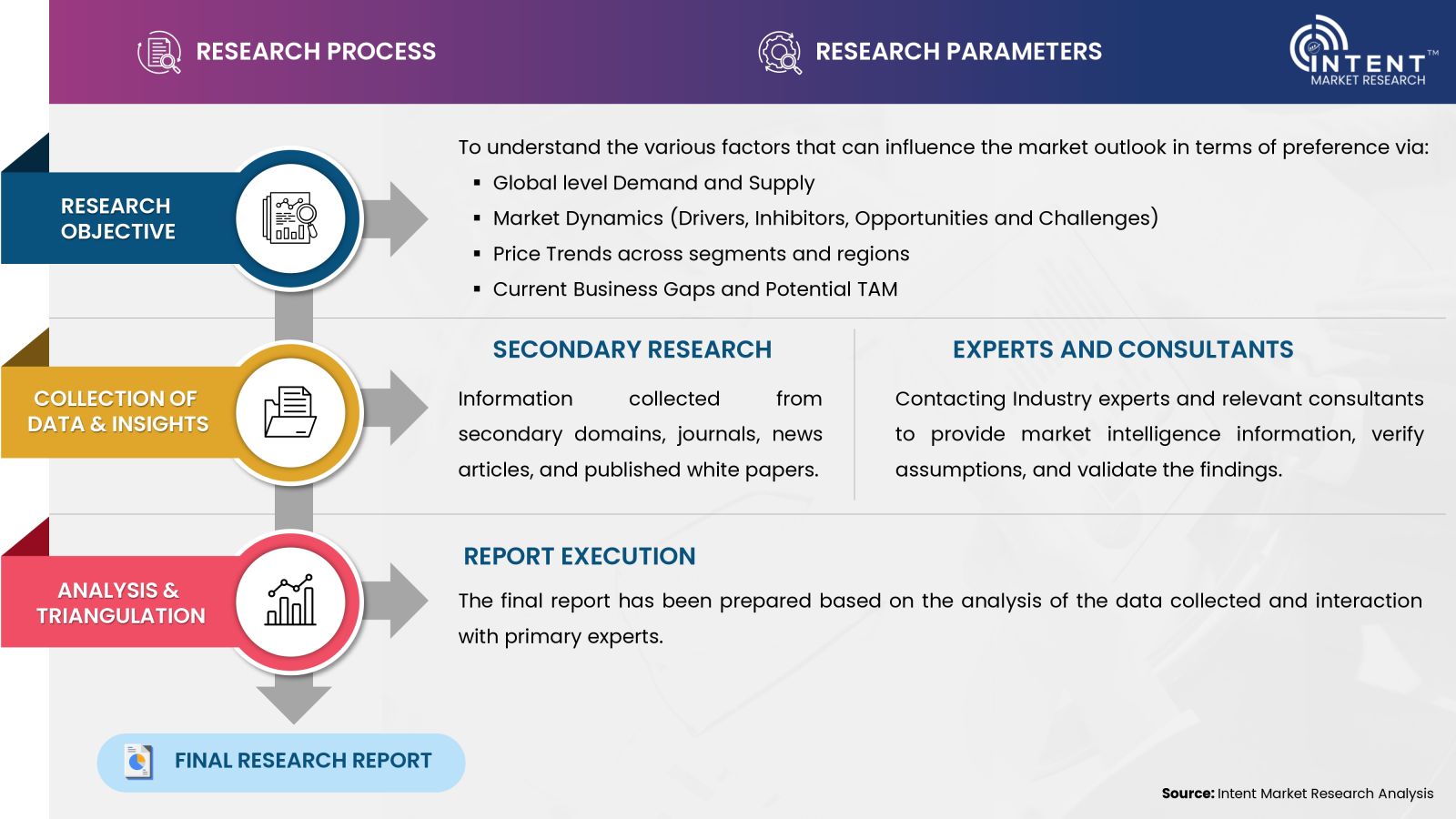
- Secondary Research Approach: During the initial phase of the research process, we acquire and accumulate extensive data continuously. This data is carefully filtered and validated through a variety of secondary sources.
- Primary Research Approach: Following the consolidation of data gathered through secondary research, we initiate a validation process to verify all the market numbers, assumptions and validate the findings by engaging with subject matter experts.
Data Collection, Analysis and Interpretation:
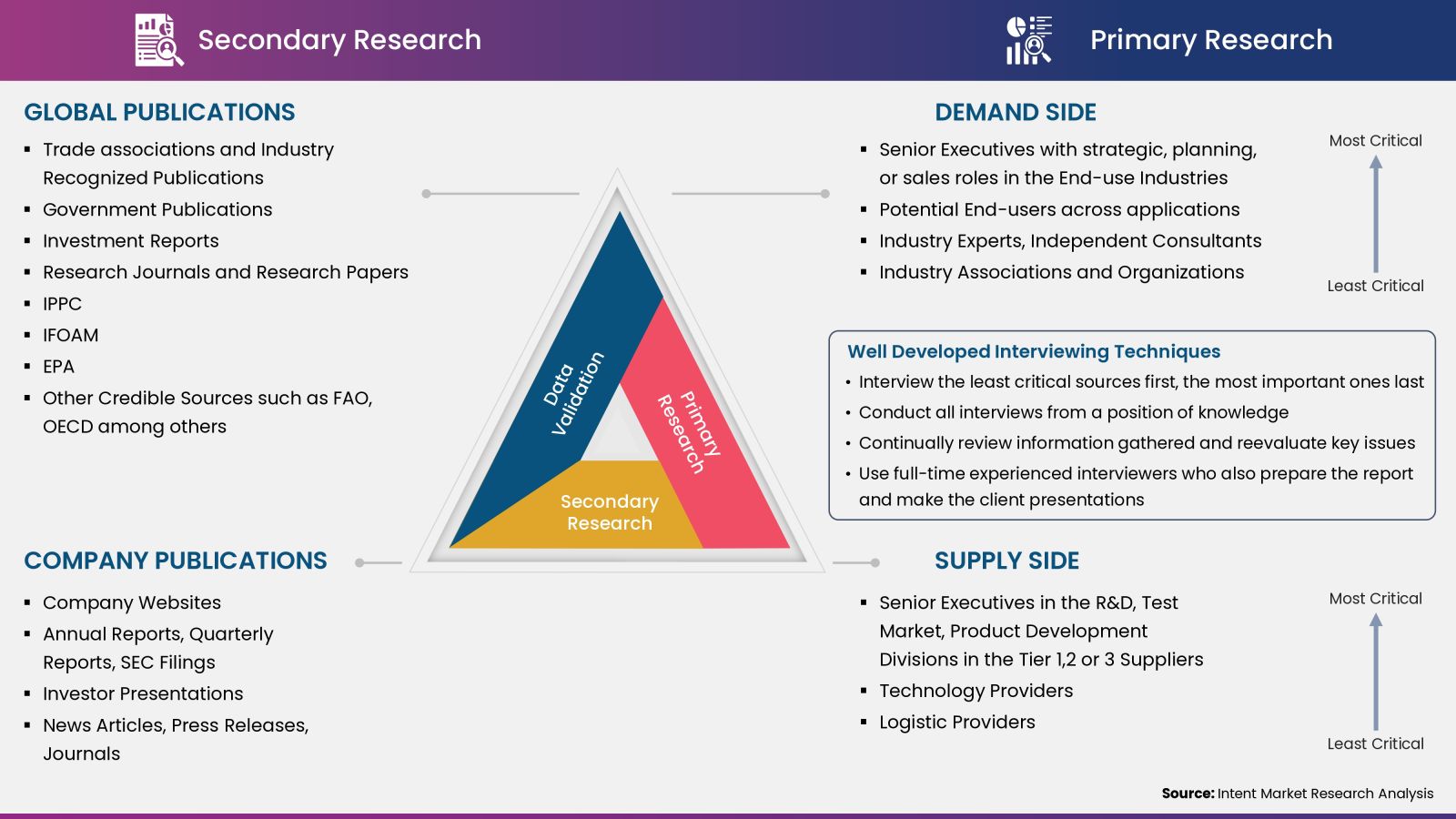
Research Methodology
Our market research methodology utilizes both top-down and bottom-up approaches to segment and estimate quantitative aspects of the market. We also employ multi-perspective analysis, examining the market from distinct viewpoints.
